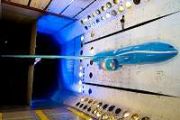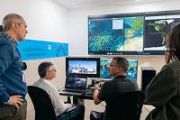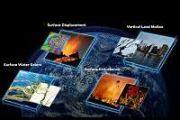
Copernical Team
China opens Shenzhou-13 return capsule
 On Tuesday, China opened the return capsule of the Shenzhou-13 manned spaceship which carried three astronauts back to Earth on April 16, according to the China Manned Space Agency (CMSA).
Items carried by the spacecraft, including crop seeds, 8K high-definition memory card storing images and videos taken by the astronauts in orbit, commemorative stamps, and paintings by Hong Kong teenager
On Tuesday, China opened the return capsule of the Shenzhou-13 manned spaceship which carried three astronauts back to Earth on April 16, according to the China Manned Space Agency (CMSA).
Items carried by the spacecraft, including crop seeds, 8K high-definition memory card storing images and videos taken by the astronauts in orbit, commemorative stamps, and paintings by Hong Kong teenager NASA gives boost to Boston University-led effort to model solar system's protective bubble
 A Boston University-led team that has pioneered major advances in our understanding of the bubble protecting the solar system-and all life on Earth-has won a major new grant from NASA. The SHIELD (Solar wind with Hydrogen Ion Exchange and Large-scale Dynamics) DRIVE Science Center has been awarded a new five-year grant to continue advancing its breakthrough work in heliophysics, the study of how
A Boston University-led team that has pioneered major advances in our understanding of the bubble protecting the solar system-and all life on Earth-has won a major new grant from NASA. The SHIELD (Solar wind with Hydrogen Ion Exchange and Large-scale Dynamics) DRIVE Science Center has been awarded a new five-year grant to continue advancing its breakthrough work in heliophysics, the study of how The instability at the beginning of the solar system
 Michigan State University's Seth Jacobson and colleagues in China and France have unveiled a new theory that could help solve a galactic mystery of how our solar system evolved. Specifically, how did the gas giants - Jupiter, Saturn, Uranus and Neptune - end up where they are, orbiting the sun like they do?
The research also has implications for how terr
Michigan State University's Seth Jacobson and colleagues in China and France have unveiled a new theory that could help solve a galactic mystery of how our solar system evolved. Specifically, how did the gas giants - Jupiter, Saturn, Uranus and Neptune - end up where they are, orbiting the sun like they do?
The research also has implications for how terr Mars Helicopter spots landing rig and chute from Perseverance
 NASA's Ingenuity Mars Helicopter recently surveyed both the parachute that helped the agency's Perseverance rover land on Mars and the cone-shaped backshell that protected the rover in deep space and during its fiery descent toward the Martian surface on Feb. 18, 2021. Engineers with the Mars Sample Return program asked whether Ingenuity could provide this perspective. What resulted were 10 aeri
NASA's Ingenuity Mars Helicopter recently surveyed both the parachute that helped the agency's Perseverance rover land on Mars and the cone-shaped backshell that protected the rover in deep space and during its fiery descent toward the Martian surface on Feb. 18, 2021. Engineers with the Mars Sample Return program asked whether Ingenuity could provide this perspective. What resulted were 10 aeri Campaign #2: The Delta Front
 This week on Mars, Perseverance officially began the "Delta Front Campaign." This second campaign of the mission commenced on April 18th, 2022, the 415th sol since landing. Each campaign represents a sub-portion of the Mars 2020 mission and is dedicated to exploring a distinct region, drilling designated sets of cores for possible future return to Earth, and taking numerous in situ science obser
This week on Mars, Perseverance officially began the "Delta Front Campaign." This second campaign of the mission commenced on April 18th, 2022, the 415th sol since landing. Each campaign represents a sub-portion of the Mars 2020 mission and is dedicated to exploring a distinct region, drilling designated sets of cores for possible future return to Earth, and taking numerous in situ science obser SpaceX launches NASA's Crew-4 to ISS after week-long delay
 NASA and SpaceX launched four astronauts to the International Space Station early Wednesday.
Crew-4 boarded a brand new Crew Dragon capsule and launched on a SpaceX Falcon 9 rocket to the ISS at 3:52 a.m. EDT from launch Pad 39A at Kennedy Space Center in Florida.
NASA astronauts Kjell Lindgren, Bob Hines and Jessica Watkins are joined by European Space Agency astronaut Samantha
NASA and SpaceX launched four astronauts to the International Space Station early Wednesday.
Crew-4 boarded a brand new Crew Dragon capsule and launched on a SpaceX Falcon 9 rocket to the ISS at 3:52 a.m. EDT from launch Pad 39A at Kennedy Space Center in Florida.
NASA astronauts Kjell Lindgren, Bob Hines and Jessica Watkins are joined by European Space Agency astronaut Samantha Canada's first commercial spaceport lists on the NEO Exchange as Maritime Launch Services
 NEO is proud to welcome Maritime Launch Services Inc., a Canadian-owned commercial space company, as they list today on the NEO Exchange. Maritime Launch is now available for trading on NEO under the symbol MAXQ.
Maritime Launch is building a Spaceport in Nova Scotia, which is positioned to become a world-class commercial launch complex. The first of its kind in Canada, Spaceport Nova Scot
NEO is proud to welcome Maritime Launch Services Inc., a Canadian-owned commercial space company, as they list today on the NEO Exchange. Maritime Launch is now available for trading on NEO under the symbol MAXQ.
Maritime Launch is building a Spaceport in Nova Scotia, which is positioned to become a world-class commercial launch complex. The first of its kind in Canada, Spaceport Nova Scot Inmarsat CEO issues warning over space sustainability with 'unmanaged expansion'
 Rajeev Suri, Chief Executive Officer of Inmarsat, the world leader in global, mobile satellite communications, issued a stark warning Wednesday that unmanaged space sector expansion could exacerbate environmental damage, stifle innovation and undermine the long-term capability of satellites to help combat climate change.
Addressing the Royal Aeronautical Society's conference 'Towards a Spa
Rajeev Suri, Chief Executive Officer of Inmarsat, the world leader in global, mobile satellite communications, issued a stark warning Wednesday that unmanaged space sector expansion could exacerbate environmental damage, stifle innovation and undermine the long-term capability of satellites to help combat climate change.
Addressing the Royal Aeronautical Society's conference 'Towards a Spa Minerva mission begins as Samantha arrives at Space Station
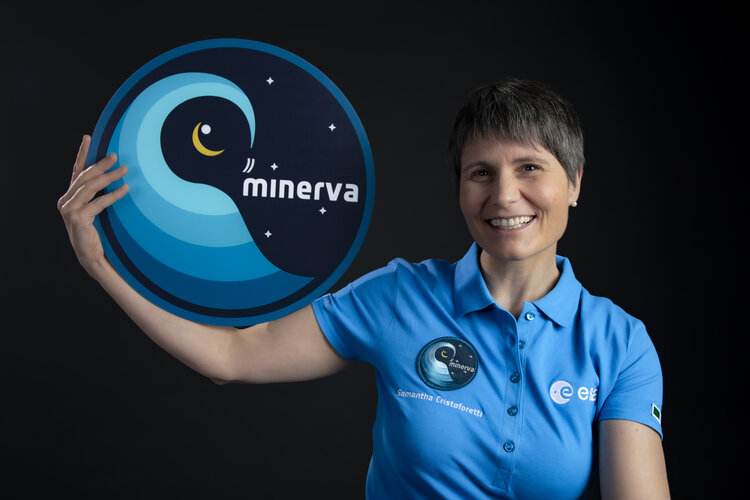
Crew Dragon spacecraft Freedom, carrying ESA astronaut Samantha Cristoforetti and her NASA colleagues Kjell Lindgren, Robert Hines and Jessica Watkins, docked to the International Space Station at 01:37 CEST Thursday 28 April.
Jessica Watkins makes history as first Black woman launched to ISS for extended space mission
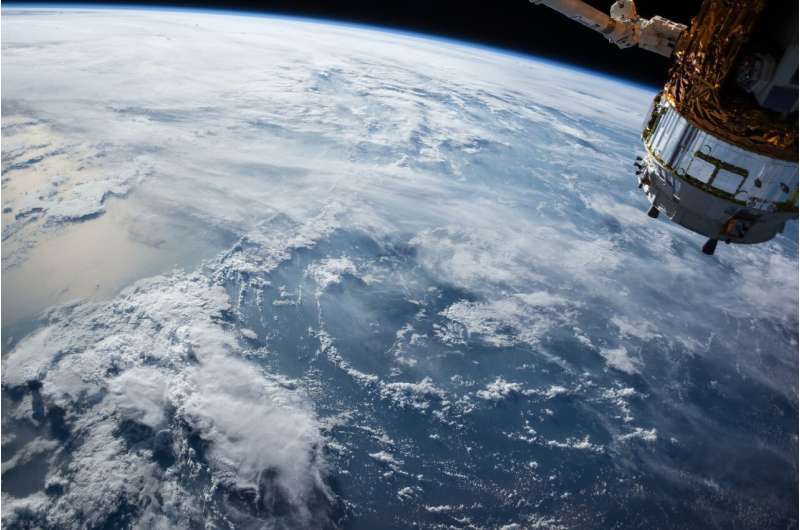
Jessica Watkins made history on Wednesday by becoming the first Black woman launched into space for an extended mission on the International Space Station.
Watkins, 33, and three other astronauts rocketed into space from the Kennedy Space Center on Merritt Island, Florida at 3:52 a.m. EDT.
"I think it really is just a tribute to the legacy of the Black women astronauts that have come before me, as well as to the exciting future ahead," Watkins said during an NPR interview.
Last November, NASA announced Watkins would be the fourth and final seat on Crew Dragon for SpaceX's Crew-4 mission.
The assignment meant she would be the first Black woman to join an ISS crew for scientific research, station maintenance, training and more over a six-month period. Previously, Victor Glover, part of SpaceX's Crew-2 mission that launched in November 2020, became the first Black astronaut to join a station crew.
Out of 248 astronauts who have visited the ISS, only seven have been Black and none were included in expeditions lasting several months.
In 1983, Guion Bluford became the first Black astronaut to travel to space.


































